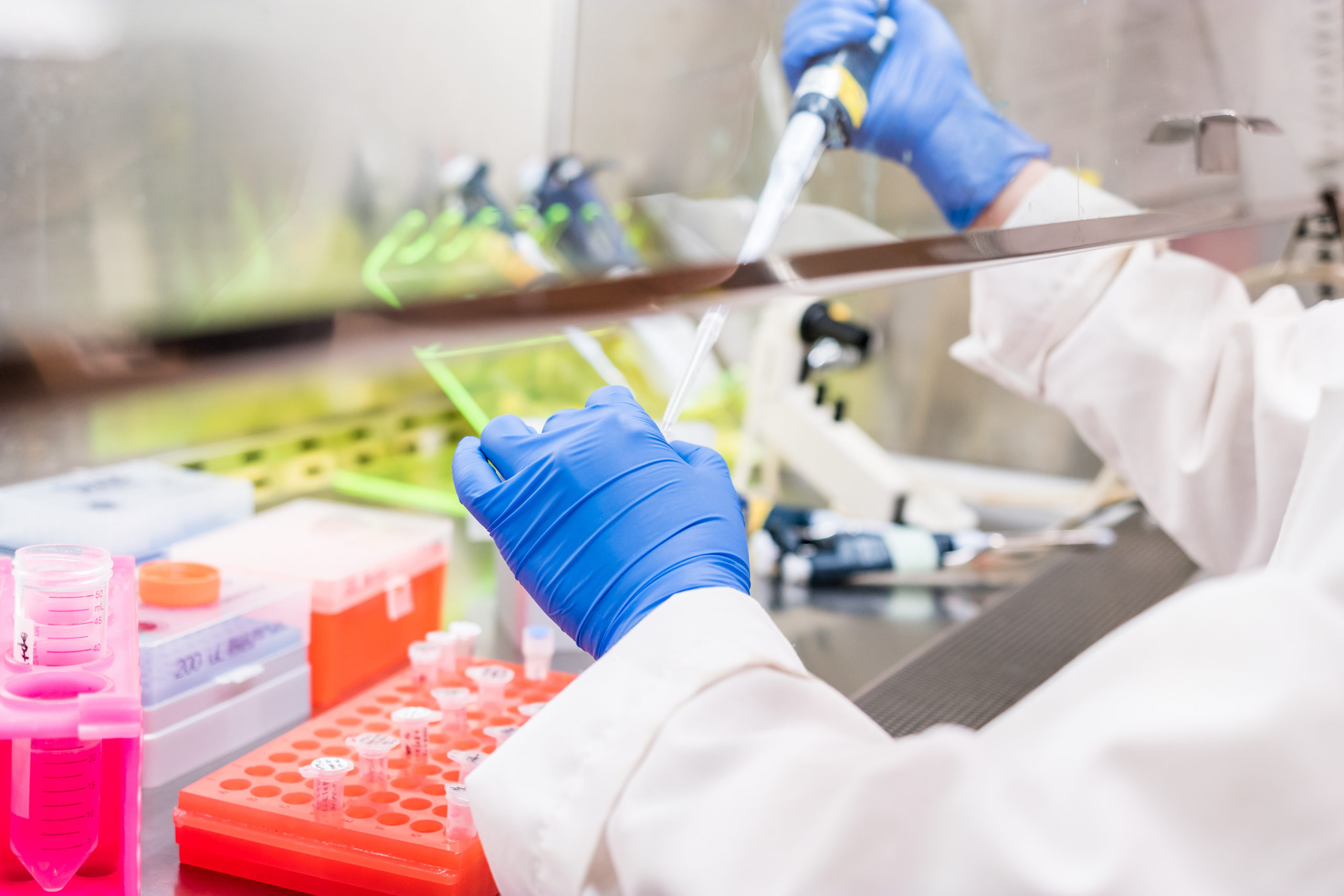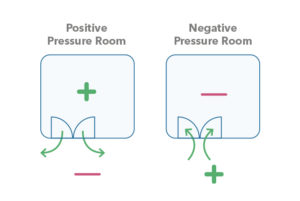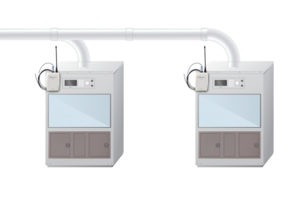Monitoring
Air Flow Monitoring for Cleanrooms and Fume Cupboards

Monitoring

Typically, cleanrooms operate in one of two ways:

The air handling systems providing the air flow to cleanrooms can be monitored using air flow sensors and/or differential pressure sensors. Whereas fume cupboards would typically only be monitored using air flow sensors.
At Ellab, we understand the importance of maintaining air flow within specified limits to avoid potential contamination, exposure and to keep your colleagues safe while working in cleanrooms or isolated chambers, such as fume cupboards. With effective methods for wireless air flow monitoring and alarms, you can be equipped to handle regular checks for general filtration maintenance and subsequent regulatory compliance requirements.
In the example below, this installation would measure the air volume coming out of the two fume cabinets. Air flows out, so the compatible air flow sensor is securely placed precisely in the centre of each vertical fume cupboard pipe to ensure accurate and individual data is obtained.
Over time, the powerful high-efficiency particulate absorption (HEPA) filters used within these processes, can become blocked and require changing. As this happens, the air flow movement decreases, which can result in exposure of potentially harmful fumes to those carrying out the experiment.

The illustration above shows Hanwell Pro RL4810-AF radio transmitter, which uses either a 0-5m/s, 0-10m/s or 0-20m/s air flow sensor.
If Hanwell IceSpy is used in the facility, we can also use the Hanwell IceSpy IN-MA001 transmitter with the same air flow sensors. Either way, both transmit data directly and wirelessly to the EMS software for 24/7 data analysis and compliance, which will immediately alert you should breaches in your air flow data occur.

Explore
Do you have a question?
Do you have a question?